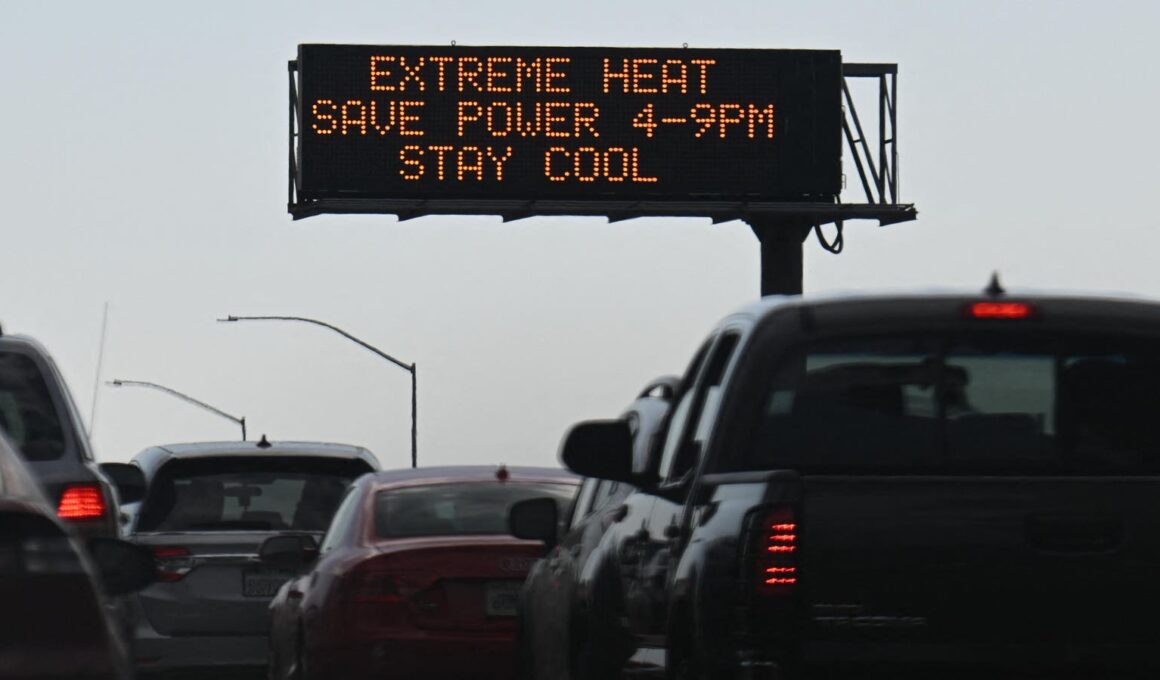Topline
The record set on Sunday for the planet’s hottest day ever lasted just a single day, as another record was set on Monday as a series of summer heat waves blister North America and scientists warn human-caused greenhouse gas emissions could accelerate the pace of climate change.
The European Union’s Copernicus Climate Change Service recorded the hottest day on Earth on Sunday, … [+]
Key Facts
The global average surface air temperature on Monday, July 22, reached 17.15 degrees Celsius (62.87 degrees Fahrenheit), according to data from the European Union’s Copernicus Climate Change Service, making it the hottest day since at least 1940 (Copernicus data dates to the mid-20th century).
That record surpassed a world record set just one day earlier at 17.09 degrees Celsius (62.76 degrees Fahrenheit), narrowly breaking the previous record of 17.08 degrees Celsius, recorded on July 6, 2023.
The consecutive record-breaking days come as scientists warn about devastating and long-range effects of human-induced climate change, which has been linked to exacerbated heat waves, more intense major storm systems, sea-level rise and prolonged drought.
In a statement Tuesday, Copernicus director Carlo Buontempo said “we are now in truly uncharted territory and as the climate keeps warming, we are bound to see new records being broken in future months and years.”
Get Forbes Breaking News Text Alerts: We’re launching text message alerts so you’ll always know the biggest stories shaping the day’s headlines. Text “Alerts” to (201) 335-0739 or sign up here.
Tangent
Scientists have repeatedly warned rising global temperatures could bring “catastrophic” consequences if no action is taken to reduce greenhouse gas emissions, with the United Nations Framework Convention on Climate Change reporting in 2022 that, by 2030, those emissions will rise over 10% above 2010 levels. Increased emissions could drastically reduce the chances of meeting a monumental goal laid out at the 2015 Paris Climate Agreement to limit the rise in global temperatures to 1.5 degrees Celsius above pre-industrial levels by 2100, scientists said. By 2033, U.N. scientists have warned the world could pass that 1.5 degree Celsius threshold, likely triggering more intense droughts, flooding and water security issues, according to the U.N.’s Intergovernmental Panel on Climate Change.
Where Have Temperature Records Been Broke In The U.s.?
The global record comes as tens of thousands of cities and towns across the U.S. topple daily temperature records, with Fort Lauderdale, Florida doing so 20 times since Memorial Day, and three cities (Portland, Oregon; Tampa, Florida; and New Orleans) setting daily records on seven occasions this summer. In the Southwest, Albuquerque set a new all-time record for the city last month at a staggering 113 degrees Fahrenheit, while Las Vegas broke the city’s all-time high temperature record by four degrees earlier this month with a high of 120.
Surprising Fact
Scientists warn against drinking alcohol and caffeinated drinks during a heat wave, and caution against consuming sugar-heavy foods and drinks that can accelerate dehydration, according to the American Red Cross. Heavy meals can also cause body heat to rise due to increased digestion, creating a two-pronged feeling of intensive heat when outside temperatures increase, George Washington University integrative medicine director Leigh Frame told The Washington Post last month. Spicy food, on the other hand, could prove beneficial when it’s hot outside by accelerating sweating.
What To Watch For
With sea surface temperatures rising and a weather phenomenon called La Niña dampening wind shear in the Atlantic, forecasters warn the 2024 Atlantic hurricane season could be among the most active on record. Scientists at the National Oceanic and Atmospheric Administration predicted between 17 and 25 named storms, well above the 14 recorded on average over the past 30 years, during hurricane season, which lasts between June 1 and Nov. 30. Of those storms, NOAA predicts eight to 13 will become hurricanes, including up to seven major ones (maximum sustained wind speeds of at least 111 mph). So far, there have been three named storms, the most intense being Hurricane Beryl, a deadly Category 5 storm that pummeled the Windward Islands and passed just south of Jamaica, before weakening as it approached Mexico and Texas.
Further Reading
“>








